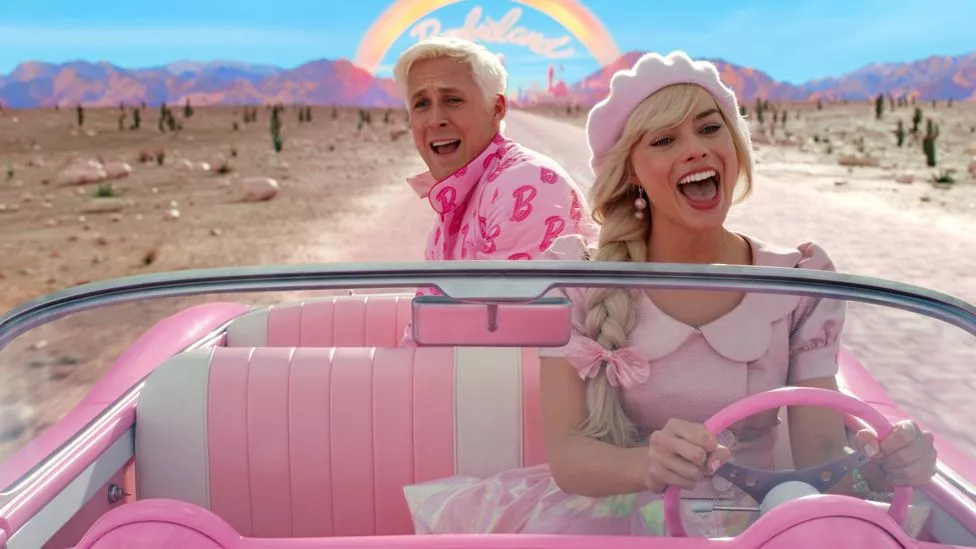
Article
Barbie extravaganza: 5 things to learn from a master move in marketing & branding
Barbie is back in business. As a millennial woman, I vaguely remember playing with Barbie dolls, but I’m pretty sure the last time I gave any thought to the doll was in a negative context of stereotyping, sexualizing, and misrepresenting women. This summer, though, it’s hard to look anywhere and miss the ocean of pink and sparkles. Opinions on the movie itself vary, but one thing everyone can agree on is that this has been a masterful move in marketing from parent company Mattel and film studio Warner Bros.
What are the elements of the marketing strategy that have made this one of the most successful movies ever? And perhaps an even more intriguing question: has Mattel succeeded in repositioning one of their most controversial brands as a feminist icon?
The marketing strategy behind the summer blockbuster
“Have you seen the Barbie movie yet?” is a question asked in households and friend groups all over the world. Since its release in mid-July, the Barbie movie has already crossed $1 billion at the global box office. The reported marketing budget leading up to the movie came to a staggering $150 million, slightly more than what it cost to make the movie.
The secret recipe? A big budget, yes, but also a diversified and creative marketing strategy that all marketers can take note of. Let’s look at the elements that made this a succes
1. Choosing the right moment in culture & the power of nostalgia
Warner Bros. and Mattel have timed the launch of this movie perfectly. We accept and even expect brands to reinvent themselves and challenge their own legacy, while taking a stance on societally and politically important topics. The timing is also right since we have seen an evolution in the representation of feminism. Today we champion both hyperfemininity and feminism, allowing a person to be “multiple contradictory things in one” and thereby erasing old-fashioned beliefs. Yes, if you like pink and glitter, you can also be a serious and competent person. Lastly, Barbie speaks to its target audiences by being just old enough to provoke the right feelings of nostalgia but not too old to have become irrelevant.
2. Creating buzz and leveraging user generated content
The teasing phase started one year ago, when pictures of the 2 main movie stars were strategically leaked before the launch of the trailer. This already made people talk and created buzz around the movie.
In the lead up to the movie launch, the Barbie team understood the importance of virality and leveraging user-generated content, with the launch of an AI generated selfie filter that allowed fans to insert themselves straight into Barbie Land.
Finally, a happy coincidence that might even be the biggest contributor to the organic buzz around the movie was the simultaneous release of the movie Oppenheimer, resulting in the viral concept of “Barbenheimer”, a memeficiation that Barbie’s marketing team happily embraced.
3. Expanding reach through brand collaborations and merchandising
A lot of brands jumped on the Barbie bandwagon, resulting in a long list of both likely and unlikely partnerships, taking the Barbie buzz to the next level. From Barbie Crocs and Barbie Xbox, to a collection with Gap, Superga, and Fossil, to the iconic neon Barbie rollerblades from Impala Skate. Through this wide range of partnerships, Barbie has managed to expand its reach and appeal to a large and varying demographic of all ages and genders.
4. Experimenting with experiential marketing
On top of the large list of brand collaborations in consumer goods, the marketing team took it one step further by creating unique experiences around the movie and the brand. For example, a life-size Barbie Dreamhouse was built in Malibu and is now bookable on Airbnb. An event was organized in collaboration with Bumble, featuring online dating tips from Barbie and Ken. And finally, google any keyword related to Barbie and Google will turn bright pink and sparkly. Marketing tactics like these immerse and surprise your audience and create memorable moments.
5. Driving recognition through consistent branding
Consistent visual identity is a key element for every brand, and one that the Barbie team executed to perfection across all channels. An example of this are the minimalist billboards in Barbie’s iconic bright pink, with only the release date in the signature Barbie font. Without even a logo on it, the brand behind the billboard is instantly recognized, which is proof of Mattel’s consistent investments in branding over the past decades.
A bright pink future ahead for Mattel?
That the Barbie movie is a success is undeniable. But what does this mean for Mattel and the long-term vision for the brand Barbie?
Barbie is a brand that is full of contradictions and has a complicated legacy. Since its launch 60 years ago, the brand and product have been forced to evolve in order to survive. In 2015, Barbies were launched with different hairstyles, body shapes, and flat feet. But this wasn’t enough to win back the hearts of consumers.
This movie represents the next chapter in the evolution of the brand. What Mattel did really well with this movie, is that they dared to make fun of themselves and address this problematic legacy head-on. What Greta Gerwig, the movie’s director, did really well was take a brand that had lost its emotional leverage over the years, and make it human, complex, committed, charming, strange, and relatable.
Whether this will have a positive impact on Mattel sales and earnings remains unclear for the moment and will have to be assessed in the longer term. The movie release is part of a larger strategy for the company, which is expanding into entertainment outside of consumer goods and evolving from a manufacturing company to an IP company.
A key takeaway for us marketers is that, as a brand, your goal is to stay relevant. With this movie, nothing actually changed about the product that is Barbie, but Mattel wanted to create a shift in what the brand stands for. Is Barbie now a feminist icon? Not sure about that yet. But one thing that is sure is that today, at 60 years old, Barbie is a brand that everyone knows, is talking about, and evokes some kind of feeling, which is something most brands can only dream about.
